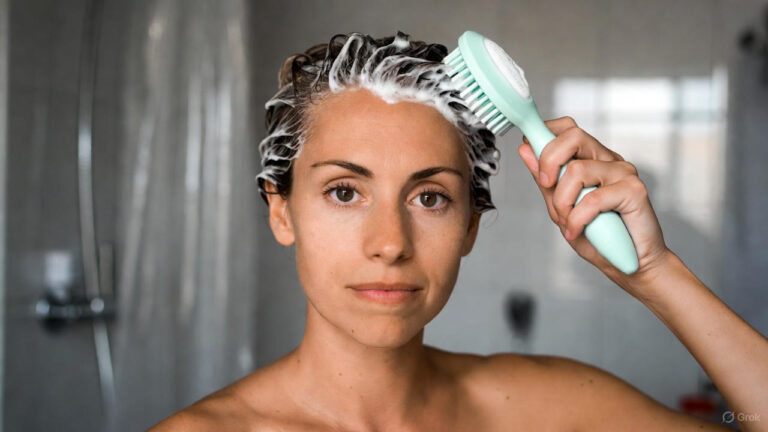In a world dominated by well-established beauty giants, there’s a thriving underdog: the indie beauty brand. Exploring the world of indie beauty brands is like discovering hidden gems in a crowded marketplace. These brands are redefining the beauty industry, gaining popularity for their authenticity, innovation, and ethical practices.
This comprehensive journey will unveil the intriguing universe of indie beauty brands, their unique characteristics, and their growing influence on how we perceive and embrace beauty.
I. What are Indie Beauty Brands?
Characteristics that Define Indie Beauty Brands
Indie beauty brands are characterized by their independence, creativity, and commitment to uniqueness. They prioritize qualities like authenticity, transparency, and innovation.
Indie beauty brands are known for their independence from large corporations. They embrace creativity and are driven by passion, not just profits. These brands are committed to uniqueness and often focus on qualities like authenticity, transparency, and innovation.
Distinguishing Features from Mainstream Beauty Brands
Indie beauty brands set themselves apart from mainstream brands through their innovative product offerings, ethical practices, and closer relationships with consumers.
Indie beauty brands distinguish themselves from mainstream brands by offering innovative and unique products. They also stand out for their commitment to ethical practices, sustainability, and a closer, more personal connection with their consumers.
II. The Rise of Indie Beauty Brands
Historical Background and Origins
Indie beauty brands have a rich history that dates back to grassroots beginnings. They were often born out of a desire to challenge conventional beauty norms and offer consumers something fresh and authentic.
Indie beauty brands have deep roots in grassroots movements. They come outd from a desire to challenge conventional beauty norms and provide consumers with something new and authentic.
Factors Contributing to Their Growth
Several factors have contributed to the remarkable growth of indie beauty brands, including social media, consumer demand for transparency, and an increasing focus on sustainability.
The growth of indie beauty brands can be attributed to factors like the power of social media, consumers’ demand for transparency, and the rising importance of sustainable and ethical practices in the beauty industry.
Market Trends and Consumer Preferences
Market trends and consumer preferences are changing, with consumers increasingly favoring indie beauty brands for their unique, high-quality, and ethical products.
As market trends and consumer preferences change, more people are turning to indie beauty brands. Consumers value these brands for their unique, high-quality products and ethical commitments.
III. The Appeal of Indie Beauty Brands

Emphasis on Authenticity and Transparency
Indie beauty brands prioritize authenticity and transparency in their operations, allowing consumers to make informed choices and build trust.
One of the key appeals of indie beauty brands is their emphasis on authenticity and transparency. This openness allows consumers to make informed choices and build trust in the brand.
Unique and Innovative Product Offerings
Indie beauty brands are known for their innovative and distinct product offerings. They bring fresh ideas and unique formulations to the beauty market.
Indie beauty brands are celebrated for their innovative and unique product offerings. They bring fresh ideas and distinct formulations to the beauty market, providing consumers with novel experiences.
Strong Focus on Sustainability and Ethical Practices
Many indie beauty brands place a strong emphasis on sustainability and ethical practices, which align with the values of conscious consumers.
A significant aspect of the appeal of indie beauty brands is their commitment to sustainability and ethical practices. This alignment with the values of conscious consumers further solidifies their appeal.
IV. Challenges Faced by Indie Beauty Brands
Competition with Established Beauty Giants
Indie beauty brands often face fierce competition from established beauty giants with larger budgets and resources.
A notable challenge for indie beauty brands is the fierce competition they encounter from established beauty giants. These giants often have significantly larger budgets and resources at their disposal.
Limited Resources and Funding
Many indie beauty brands operate with limited resources and face hurdles in securing funding for growth and expansion.
Operating with limited resources is a common challenge for indie beauty brands. They often struggle to secure the funding necessary for growth and expansion.
Compliance with regulations and establishing efficient distribution networks can be challenging for indie beauty brands entering the market.
Navigating the complex landscape of regulations and establishing efficient distribution networks can be daunting for indie beauty brands as they enter the market.
V. Success Stories and Notable Indie Beauty Brands
Profiles of Successful Indie Beauty Brands
Several indie beauty brands have achieved remarkable success, with their stories serving as inspiration for aspiring entrepreneurs in the beauty industry. Numerous indie beauty brands have achieved remarkable success, showcasing the potential for innovation and creativity in the beauty industry.
Their Journey to Success and Unique Selling Points
The journey to success for indie beauty brands is often marked by dedication, passion, and a commitment to unique selling points. The journey to success for indie beauty brands is characterized by dedication, passion, and a commitment to their unique selling points, which set them apart from the competition.
Impact on the Beauty Industry
Indie beauty brands are making a significant impact on the beauty industry by challenging conventional norms and driving innovation. Indie beauty brands are revolutionizing the beauty industry by challenging conventional norms and driving innovation. Their impact is seen in the changing landscape of the industry.
VI. Consumer Perspectives on Indie Beauty
Why Consumers Are Drawn to Indie Beauty Brands
Consumers are drawn to indie beauty brands due to their authenticity, unique products, and ethical practices. Consumers are increasingly drawn to indie beauty brands because of their authenticity, distinct product offerings, and ethical practices.
The Role of Social Media in Promoting Indie Beauty
Social media plays a pivotal role in promoting and popularizing indie beauty brands, enabling direct engagement with consumers. Social media platforms are instrumental in promoting and popularizing indie beauty brands. These platforms provide direct engagement with consumers, fostering brand loyalty.
Testimonials and Reviews from Indie Beauty Enthusiasts
Testimonials and reviews from dedicated indie beauty enthusiasts reflect the positive impact these brands have on consumers. Testimonials and reviews from passionate indie beauty enthusiasts provide insights into the positive impact these brands have on consumers.
VII. The Future of Indie Beauty Brands
Projections for the Growth and Evolution of Indie Beauty
The future of indie beauty brands holds potential for continued growth and evolution, with more brands emerging to challenge the status quo. The future of indie beauty brands is promising, with the potential for continued growth and evolution. More brands are likely to come out, challenging the status quo.
Potential Challenges and Opportunities
The future may bring both challenges and opportunities for indie beauty brands, ranging from increased competition to expanding global markets. The future may present both challenges and opportunities for indie beauty brands, from heightened competition to expanding into global markets.
The Role of Consumers in Shaping the Future
Consumers play a significant role in shaping the future of indie beauty brands, as their preferences and values guide brand innovations. Consumers have a crucial role in shaping the future of indie beauty brands, as their preferences and values guide brand innovations.
Conclusion
Indie beauty brands have revealed a dynamic industry that thrives on authenticity, innovation, and ethical practices. These brands are challenging conventional norms and driving change in the beauty industry. As we’ve seen, the success stories of indie beauty brands inspire and serve as a testament to the power of dedication and a unique selling point. Their impact on the beauty industry is unmistakable, sparking innovation and redefining beauty norms.
Frequently Asked Questions (FAQs)
1. What is an indie beauty brand?
An indie beauty brand is an independent company that produces beauty and skincare products. These brands often prioritize authenticity, innovation, and ethical practices.
2. How can I start my own beauty brand?
Starting your own beauty brand requires a passion for beauty, a unique product or concept, market research, funding, and a strong marketing strategy.
3. Is Rare Beauty an indie brand?
No, Rare Beauty is not considered an indie brand. It was founded by singer and actress Selena Gomez and is part of the larger beauty conglomerate, Kendo Brands.
4. Is Fenty Beauty an indie brand?
No, Fenty Beauty is not an indie brand. It was launched by Rihanna under the LVMH luxury group, making it a part of a larger corporate structure.
5. What is the meaning of indie beauty in the beauty industry?
Indie beauty in the beauty industry signifies independence, creativity, and a commitment to uniqueness, often prioritizing authenticity, transparency, and innovation.
6. What makes Fenty Beauty unique?
Fenty Beauty is unique for its wide range of inclusive shades, catering to diverse skin tones, and its commitment to representing underrepresented groups in the beauty industry.
7. What makes Fenty Beauty different from other brands?
Fenty Beauty’s emphasis on inclusivity and diversity sets it apart from many other beauty brands. It challenges traditional beauty norms and strives to represent a broad spectrum of consumers.
8. What is Fenty Beauty’s competitive advantage?
Fenty Beauty’s competitive advantage lies in its wide range of shades, its commitment to inclusivity, and its unique marketing approach that celebrates diversity.
9. What is the strategy of Fenty Beauty?
Fenty Beauty’s strategy rchanges around inclusivity, diversity, and innovation. It focuses on providing products for a wide range of skin tones and celebrating individuality.
10. What overall message is Fenty Beauty conveying through its branding?
Fenty Beauty’s branding conveys a message of inclusivity and self-expression. It celebrates diverse beauty and challenges traditional beauty norms.
11. How has Fenty Beauty advanced the beauty industry?
Fenty Beauty has had a significant impact on the beauty industry by setting new standards for inclusivity and diversity, pushing other brands to follow suit.
12. Who is Fenty Beauty’s target audience?
Fenty Beauty’s target audience is broad, aiming to serve consumers of all skin tones and backgrounds, emphasizing inclusivity and diversity.



